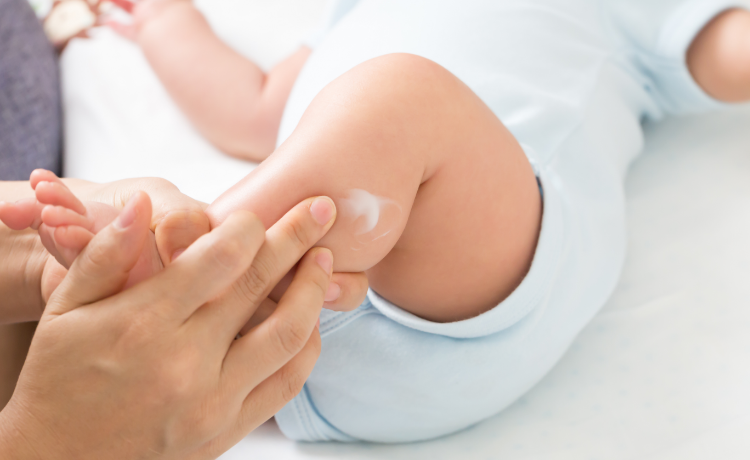Guide to Newborn Skin Care
Your new baby’s skin needs special care. Your newborn’s skin is a unique and essential shield that offers protection from the outside world, but it’s also more delicate than older skin.
Compared to adult’s skin, your new baby’s skin:
- Is about 30% thinner
- Can lose moisture faster
- Is more prone to irritation
- Absorbs and loses water at a faster rate
- Is more delicate and needs more protection
Identifying & Caring for Common Newborn Skin Conditions
Your newborn’s skin must adapt from the water-like environment of your womb to the dryer environment after birth. As their skin adapts to their new world, many babies can experience these common skin conditions.
1. Newborn Acne
Newborn acne occurs in approximately 20 percent of all babies. It may take the appearance of pimples, whiteheads or a minor rash, but it generally resolves itself during the first few months. Usually appearing on the face, especially the nose and chin, they are the result of immature sweat glands, and possibly hormones from your pregnancy. They often will disappear without treatment. For more stubborn acne please see your pediatrician.
2. Newborn Skin Peeling
You may also notice during the first few days that your newborn's skin peels off slightly, especially on the palms of his/her hands, soles of his/her feet and his/her ankles. After a few days, newborn skin peeling will typically go away on its own.
3. Newborn Cradle Cap
Some babies have cradle cap or seborrheic dermatitis — a skin condition that looks like crusty or scaly patches on the scalp or eyebrows. This is a very common newborn skin rash that may begin in the first few weeks and usually lasts several weeks or months. Try a gentle massage with Baby Oil to help soften the crust.
4. Newborn Diaper Rash
Did you know that nearly 3 out of 4 babies have experienced diaper rash? Try Desitin® to treat and prevent diaper rash on your baby. Diaper rash will typically resolve on its own but if you have any worries or concerns, please speak to your pediatrician.


